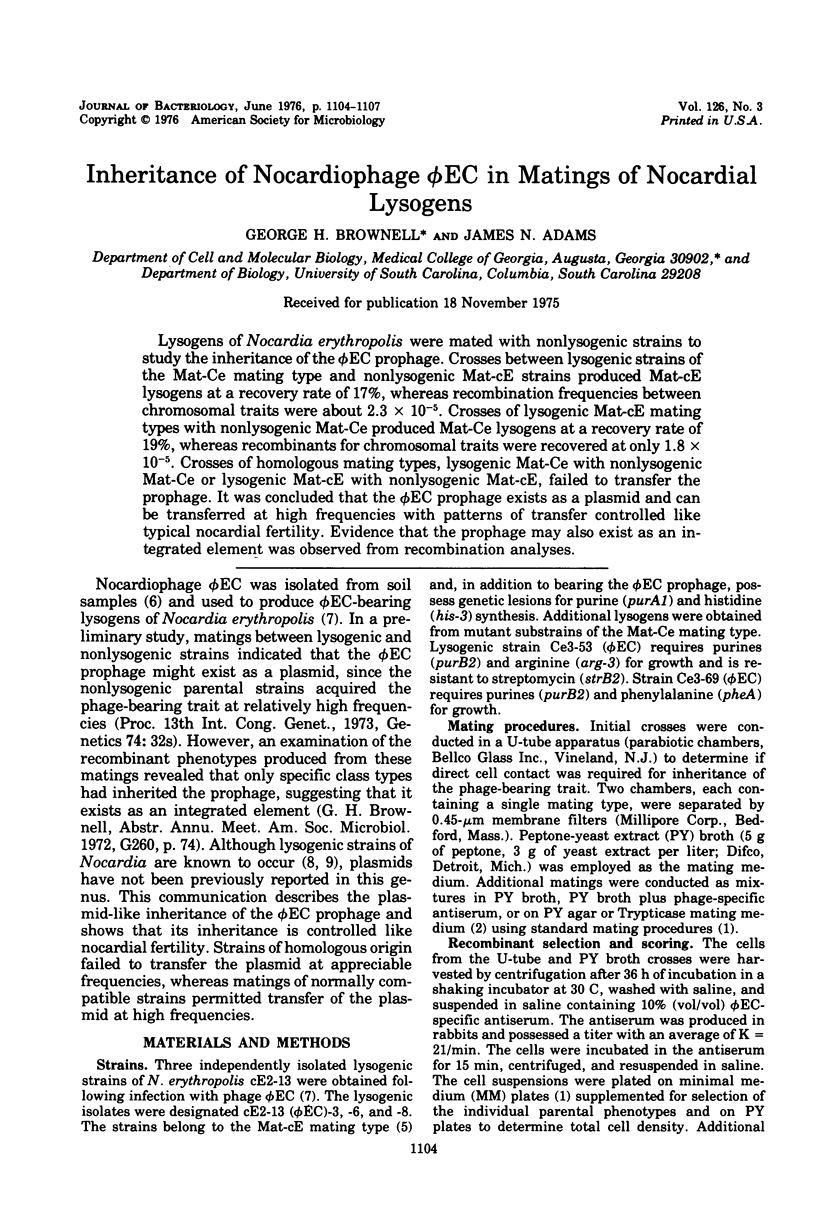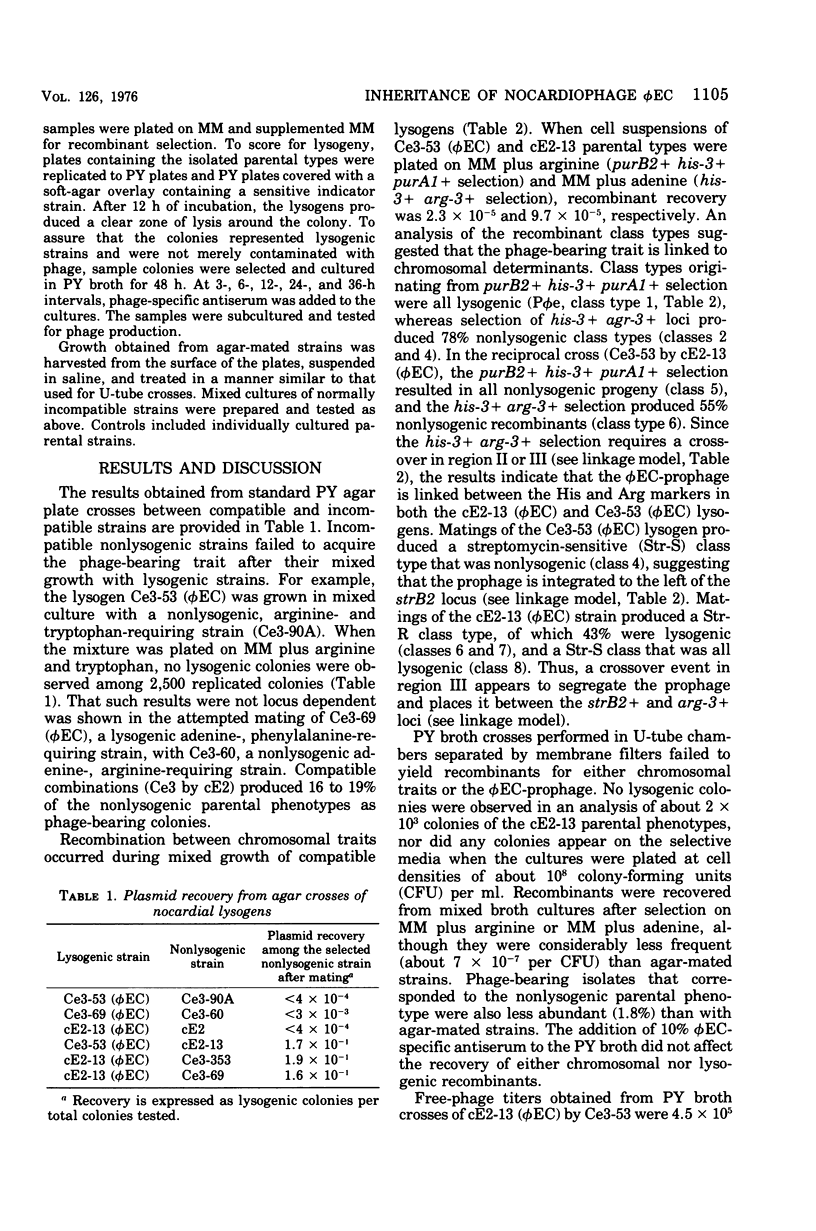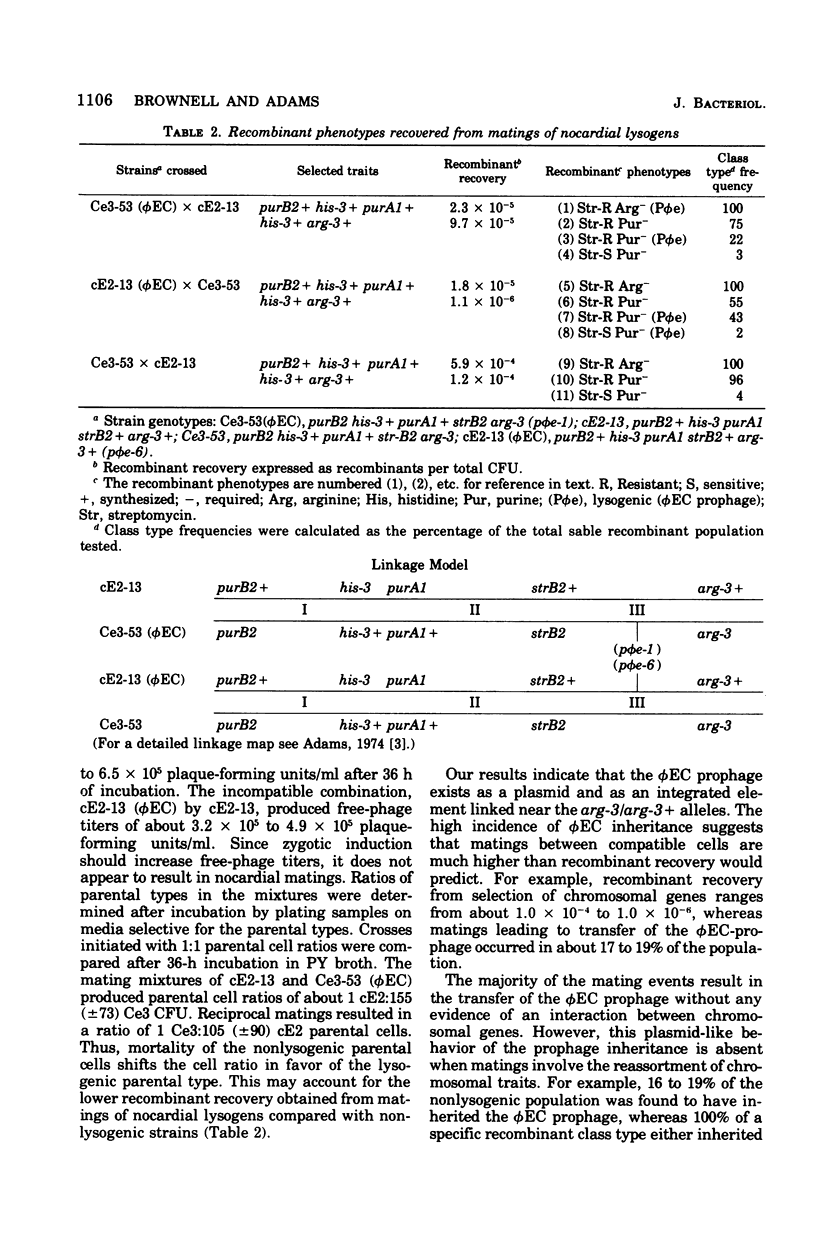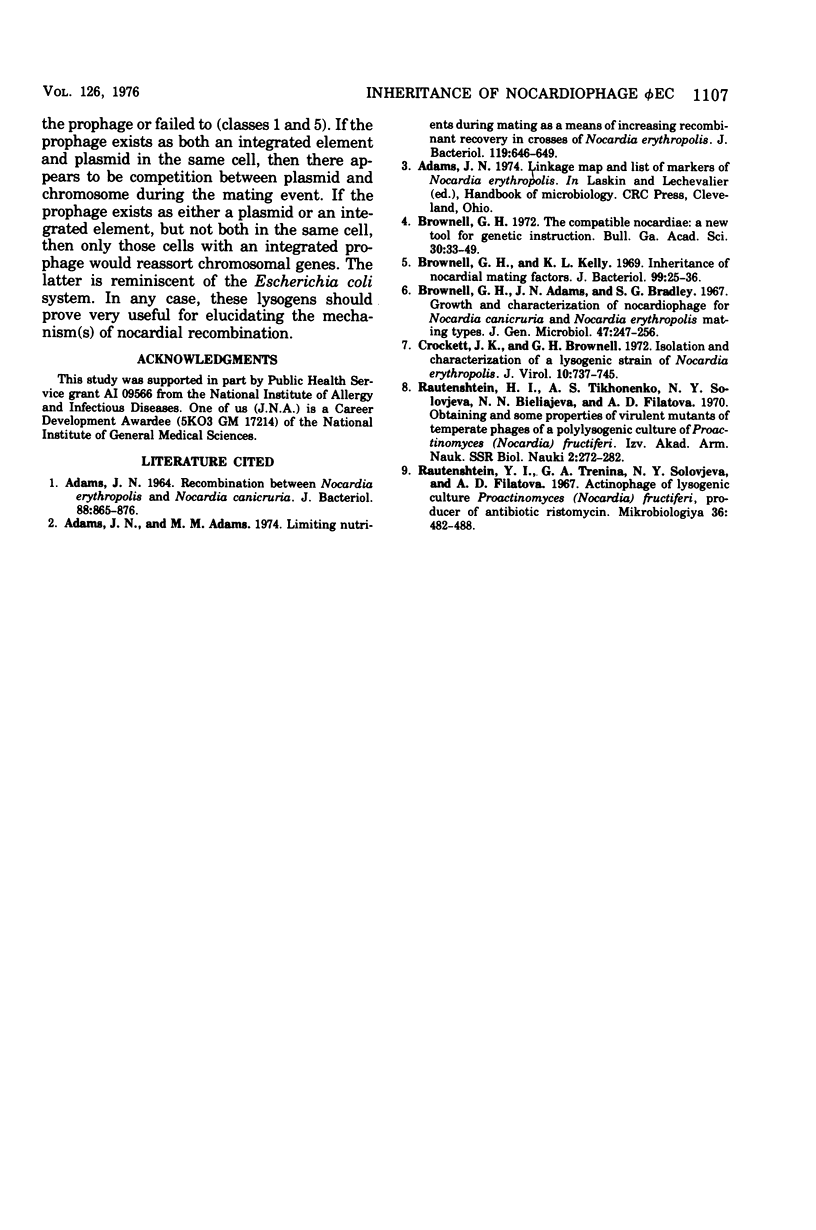Abstract
Lysogens of Nocardia erythropolis were mated with nonlysogenic strains to study the inheritance of the phi EC prophage. Crosses between lysogenic strains of the Mat-Ce mating type and nonlysogenic Mat-cE strains produced Mat-cE lysogens at a recovery rate of 17%, whereas recombination frequencies between chromosomal traits were about 2.3 x 10(-5). Crosses of lysogenic Mat-cE mating types with nonlysogenic Mat-Ce produced Mat-Ce lysogens at a recovery rate of 19%, whereas recombinants for chromosomal traits were recovered at only 1.8 x 10(-5). Crosses of homologous mating types, lysogenic Mat-Ce with nonlysogenic Mat-Ce or lysogenic Mat-cE with nonlysogenic Mat-cE, failed to transfer the prophage. It was concluded that the phi EC prophage exists as a plasmid and can be transferred at high frequencies with patterns of transfer controlled like typical nocardial fertility. Evidence that the prophage may also exist as an integrated element was observed from recombination analyses.
Full text
PDF



Selected References
These references are in PubMed. This may not be the complete list of references from this article.
- ADAMS J. N. RECOMBINATION BETWEEN NOCARDIA ERYTHROPOLIS AND NOCARDIA CANICRURIA. J Bacteriol. 1964 Oct;88:865–876. doi: 10.1128/jb.88.4.865-876.1964. [DOI] [PMC free article] [PubMed] [Google Scholar]
- Adams J. N., Adams M. M. Limiting nutrients during mating as a means of increasing recombinant recovery in crosses of Nocardia erythropolis. J Bacteriol. 1974 Aug;119(2):646–649. doi: 10.1128/jb.119.2.646-649.1974. [DOI] [PMC free article] [PubMed] [Google Scholar]
- Brownell G. H., Adams J. N., Bradley S. G. Growth and characterization of nocardiophages for Nocardia canicruria and Nocardia erythropolis mating types. J Gen Microbiol. 1967 May;47(2):247–256. doi: 10.1099/00221287-47-2-247. [DOI] [PubMed] [Google Scholar]
- Brownell G. H., Kelly K. L. Inheritance of mating factors in nocardial recombinants. J Bacteriol. 1969 Jul;99(1):25–36. doi: 10.1128/jb.99.1.25-36.1969. [DOI] [PMC free article] [PubMed] [Google Scholar]
- Crockett J. K., Brownell G. H. Isolation and characterization of a lysogenic strain of Nocardia erythropolis. J Virol. 1972 Oct;10(4):737–745. doi: 10.1128/jvi.10.4.737-745.1972. [DOI] [PMC free article] [PubMed] [Google Scholar]
- Rautenshtein Ia I., Tikhonenko A. S., Solov'eva N. Ia, Beliaeva N. N., Filatova A. D. Poluchenie i nekotorye svoistva virulentnykh mutantov umerennykh fagov polilizogennoi kul'tury Proactinomyces (Nocardia) fructiferi. Izv Akad Nauk SSSR Biol. 1970 Mar-Apr;2:272–282. [PubMed] [Google Scholar]
- Rautenshtein Ia I., Trenina G. A., Solov'eva N. Ia, Filatova A. D. Aktinofag lizogennoi kultury Proactinomyces (Nocardia) fructiferi--produtsenta antibio- tika ristomitsina. Mikrobiologiia. 1967 May-Jun;36(3):482–488. [PubMed] [Google Scholar]


